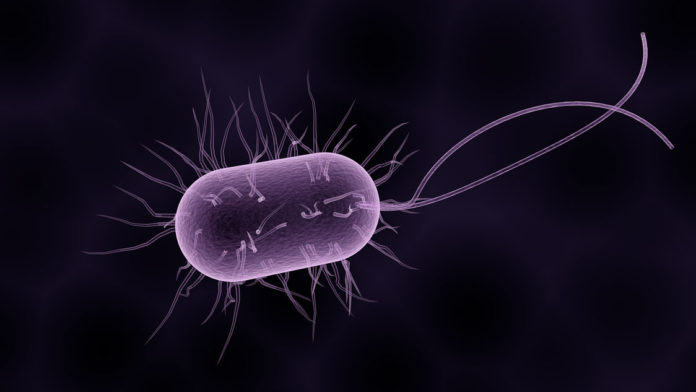Most diagrams of bacteria are pretty simple. They look like little more than a shell surrounding a loop or two of genetic material that float around in a seemingly empty pool.
Compare that to illustrations of animal or plant cells, and there’s a huge jump in complexity. Unlike bacteria, the inside of these cells are shown with lots of internal parts that perform different tasks. They have clearly defined and specialized compartments called organelles, many of which are separated from the rest of the cell by a membrane. These include the nucleus, which houses genetic material, and mitochondria, which are the powerhouses of the cell.
But just because their compartments aren’t defined by a membrane doesn’t mean there aren’t specialized areas inside bacteria.
Researchers at McGill used a new microscopy method to demonstrate that bacteria do indeed have complex internal structures, and their study was published in PNAS.
“Our paper provides evidence for a bacterial organelle that is held together by ‘sticky’ proteins rather than a membrane,” said principal investigator Stephanie Weber, assistant professor of biology at McGill University, in a press release.
Like membrane-bound organelles, these compartments have distinct clusters of biomolecules that reflect the tasks they perform.
Similar membrane-less compartmentalization has also been observed in animal and plant cells. It’s a phenomenon called liquid–liquid phase separation, which is the same thing that keeps oil and water from mixing. But because bacteria are so small, Weber needed a new way to track these sticky organelle-forming proteins. The study used a method of tracking individual molecules called photo activated localization microscopy.
“This is the first direct evidence of phase separation in bacteria, so it may be a universal process in all cell types, and could even have been involved in the origin of life,” added Weber.
Specifically, the study tracked a membrane-less organelle involved in gene transcription — the first step in converting genetic information into the molecular machinery of the cell. This is an essential function of the cell, and Weber believes this could reveal new targets for antibiotics.
Bacteria have surprising complexity compared to their usual representations. These findings underscore how even the most simple of living things are extraordinary.








































